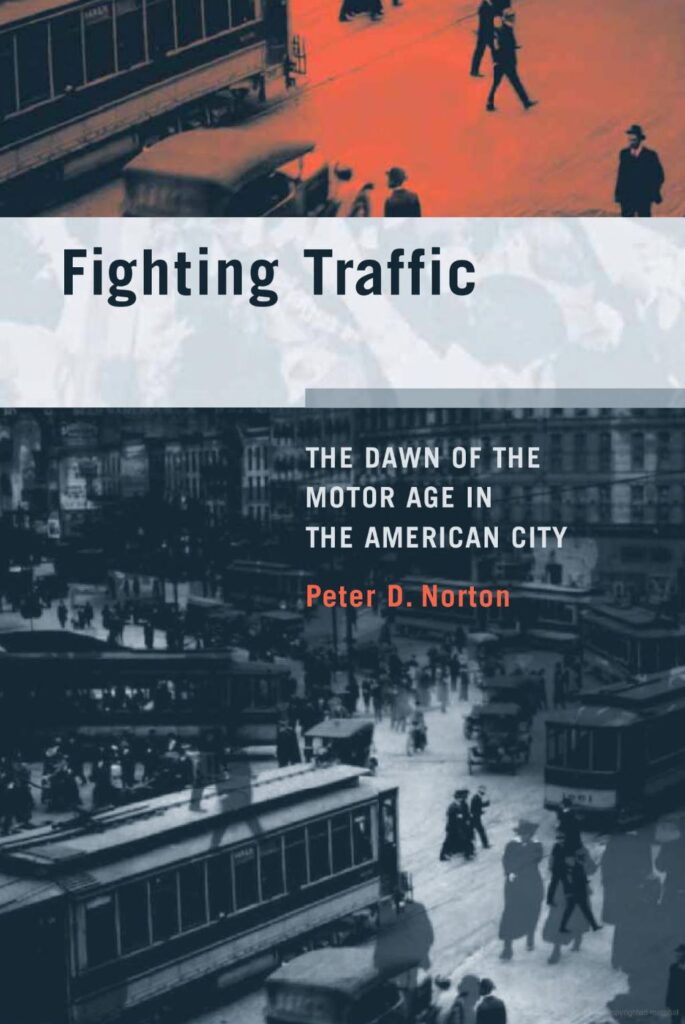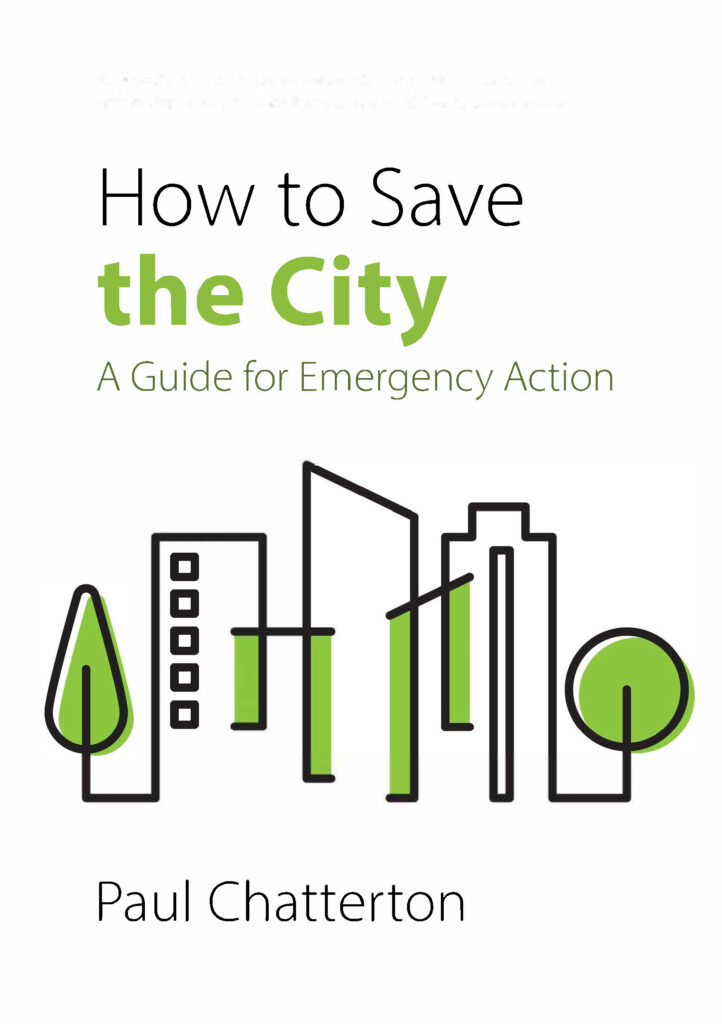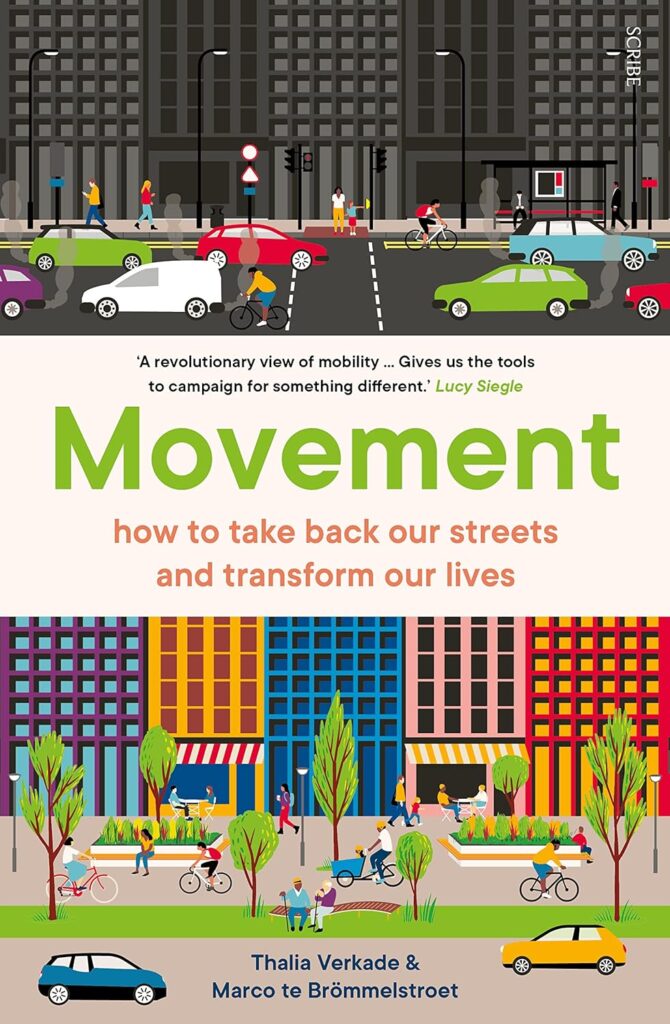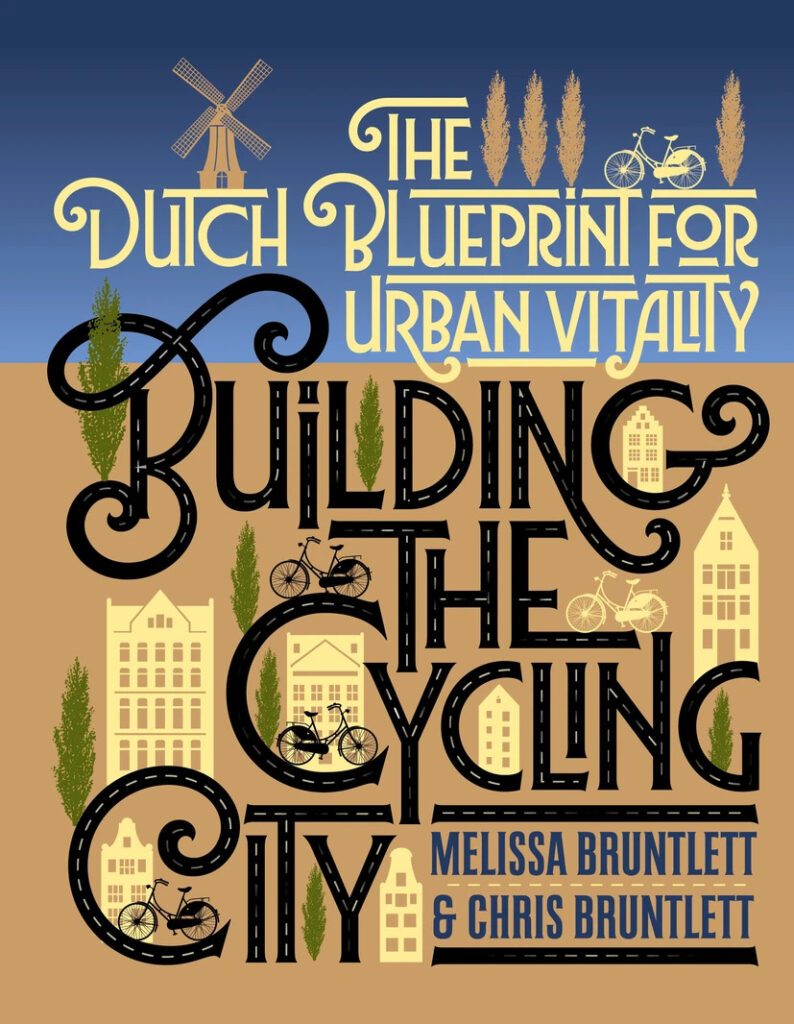[B]efore the city could be physically reconstructed for the sake of motorists, its streets had to be socially reconstructed as places where motorists unquestionably belonged
P. Norton (2011, p. 1)
[T]he car’s future in the city depended upon a reconfiguration of use and misuse. Motordom understood this fact by 1924 and worked actively to achieve it.
P. Norton (2011, p. 261)

What is it about?
While we often see the current state of affairs on our urban streets as a given, or the outcome of a ‘survival of the fittest’ mode, there was a time in history were this future was one of the least likely outcomes of a societal debate. The book offers a incredibly valuable insight in how the car-based design and rules of the road were conceived, how the battle lines were drawn and how motordom came back from a beaten position. The automobile caused havoc and the progress of the automotive city was severely smeared by the blood of inherently innocent pedestrians, and mainly children.
The lens that Norton focuses on the rhetoric battle between social groups. Where parents and teachers represented ‘Justice’, the police ‘Order’, the traffic engineers ‘Efficiency’ and finally the organized auto industry (called ‘motordom’) ‘Freedom’. For a large part, this latter group was very aware of the game that was played, and the prize at stake: the success or demise of one of the largest industries of the country at the time. They used their financial and institutional powers to develop counter rhetoric around the question of responsibility for the massacre thagt was happening on urban streets. While at first, there was little doubt that cars, and their inherent speed, were to blame, this was diverted first to blaming the ‘minority of reckless drivers’. Divorcing speed and blame, and building on pragmatic parents that were teaching their children to yield to the car, opened the possibility to confuse the blame question. Now also pedestrians could be ‘reckless’ and traffic rules needed to be policed to keep the pedestrian out of the way of traffic.
In the final part of the book, we see how the rhetoric battle was finally won and how the dawn of the automobile city was underway with massive civil engineering projects. It is depressing to see how then the short period of “interpretive flexibility’ in which society questions the very definition of their streets was quickly closed and how we are currently facing cities that were build in this image for over 8 decades. Are we again facing enough of a social crisis currently, to open up our interpretation again? Or will the self driving car just build on this strong momentum and propel us even further in the automotive version of cities and society?
What approach does it take?
262 pages of detailed historical analysis of the pivotal period of the 1920s. Norton bases himself on newspaper articles, reports and other media outlets of the time. It is the level of detail that makes the book especially interesting: showing how small were pivotal moments: a deputy association president holiday or a specific vote at a conference could spark a large effect down the road.
Who might be interested in this book?
Historians clearly can help anybody currently working on reclaiming or redefining elements of the contemporary street. The book provides lessons for how to challenge strong existing frames, although it also shows how large motordom is in terms of financial and institutional power. The main value is that it makes us realize that the current state of affairs is not a natural law, a given situation. But instead, it is the outcome ‘poured in concrete’ of an elaborate and fundamental battle of principles. Where Time, Innovation and Mobilities by Peters ‘ and Law, Engineering and the American Right-of-Way by Prytherch offer us insight in how this frame was solidified later on in rules, engineering and design, Norton shows us the beginning. Anybody interested in change, will benefit from reading this fascinating narrative of the last time such a fundamental shift happened.
Further details
Academic discipline: History
Geographical scope: United States of America
Relation to cycling: No mentioning of cycling (even once), but showing the contestation of streets, and how rules, use and misuse are constructed to gain the upperhand. Described as epic battle between pedestrians and motordom, but clear to see how contemporary urban cycling (in relation to self-driving vehicles) fit in this narrative.



